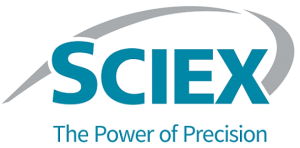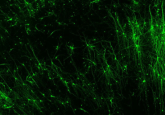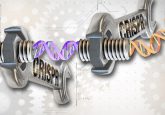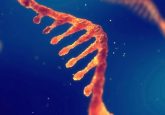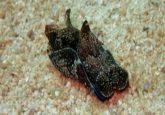IVT RNA: a burgeoning modality for therapeutic applications and beyond

 Nicholas Dreisbach (left) is a Senior Associate Scientist in the RNA team at ElevateBio (MA, USA), where he deploys his skills as an expert in capillary gel electrophoresis (CGE) technologies. His current focus involves a cross-functional approach to the development, production, and analytical development of ElevateBio’s circRNA platform.
Nicholas Dreisbach (left) is a Senior Associate Scientist in the RNA team at ElevateBio (MA, USA), where he deploys his skills as an expert in capillary gel electrophoresis (CGE) technologies. His current focus involves a cross-functional approach to the development, production, and analytical development of ElevateBio’s circRNA platform.
Here, Nicholas provides insights into in vitro transcribed (IVT) RNA, its expanding applications in drug discovery and basic research and the challenges and solutions associated with these molecules.
What is IVT RNA and what excites you about this field?
IVT RNA is enzymatically generated in a cell-free environment from a DNA template, allowing researchers to synthesize a range of RNA molecules of different types and sizes. This can be useful for the development of RNA vaccines and therapeutics and for many other basic research applications, for instance, the investigation of RNA-protein interactions and generation of pluripotent stem cells. Different RNA modalities require a diverse range of sequence and structural elements, each of which can offer unique challenges and benefits for construct design, production, and expression.
For example, an IVT product for mRNA requires 5’/3’ UTRs, a poly-A tail, which can be template encoded or enzymatically added after the IVT reaction or a combination thereof, and a 5’ cap. Meanwhile, an IVT product for self-amplifying RNA (saRNA) may require 5’/3’ conserved sequence elements (CSEs) flanking a transgene, while an IVT product for a circular RNA (circRNA) can require 5’/3’ permuted intron-exon (PIE) elements flanking an internal ribosome entry site (IRES) or ends for RNA ligation.
The utility of IVT RNA became exceedingly clear during the COVID-19 pandemic, which launched these molecules into the mainstream. So far, however, we have only scratched the surface of the potential benefits this technology can bring, which extend far beyond vaccine modalities.
What challenges do these new modalities present?
With any RNA modality, there is always a need to characterize RNA impurities in your product. These impurities could be degraded RNA species, “hotspots” that cause early termination of the IVT product, intermediates, or double-stranded RNA (dsRNA).
These all have different challenges associated with them. Degraded RNA species could be due to an overly harsh purification process or RNase contamination, which are both issues than can be resolved with process optimization and operator training. “Hotspots” that cause early termination of your IVT product could be due to purine-rich regions of the IVT template that cause dissociation of the RNA polymerase; these can be resolved using codon optimization to reduce the amount of GC repeats in template regions.
Contamination with intermediates can be very challenging depending on their chemical characteristics. If they are quite disparate from your desired product, they can be relatively easy to remove, but if they are similar to the product, however, it can be difficult or impossible to fully remove them without also losing or degrading your desired product in the process.
Some of the greatest analytical challenges I’ve experienced involve the characterization of different RNA species in mixed samples, at intermediate stages of production, using CGE. With mRNA, this could be trying to fully separate species with enyzmatically added poly-A tails from species without poly-A tails to determine the average tail length and the percent of the product that is tailed. With another modality, it could be separating highly analogous intermediates from the product to determine relative purity. In both cases, the limited capability of my previous CGE equipment to resolve these different RNA species presented a challenge.
How can these challenges be overcome?
One of the key approaches to overcoming these challenges is not to solely rely on kits and their standard operating procedures. There are a lot of great products on the market for numerous different analytical methods, but I have never come across a kit or method that works perfectly out of the box for every possible use case for RNA. Also, many scientists don’t have the time to explore and fully understand how the kits they use work because in most cases the kit gets the job done and there’s no need to look any further into it than that.
The problem is when nonstandard or novel applications come up, users often don’t know enough about how the kit works to adapt it, or they don’t know how to develop their own method. This also completely ignores the ever-present time aspect of analytical development. Developing, modifying, and validating methods requires a substantial time investment that researchers often don’t have. In these circumstances collaborating with others is a necessity.
Working with expert scientists on a method or technique is always a great way to gain valuable insights and new ideas for tackling challenges. However, there can be difficulties with this in industry, such as confidentiality and intellectual property, when attempting to work with external collaborators. So, often internal collaborations are preferred. That said, kit and equipment vendors can be quite helpful in these circumstances.
Do you have any examples of how you have collaborated with experts to help tackle these challenges?
I have worked extensively with vendor application scientists, such as Peter Holper at SCIEX (Framingham, MA, USA) to find and develop CGE methods that meet our analytical needs. I was having trouble separating RNA isoforms that were of identical size and only differed in their structure. Testing other vendors’ equipment and kits had left me unable to resolve these two isoforms. At this point, my options were to extensively modify a CGE kit to get the separation conditions I knew I’d need for my analytes, which would take time I didn’t have, or find collaborators to find a solution.
I had reached out to a number of different vendors and CROs for assistance with this analytical dilemma and received quite a lot of feedback about how I could tackle the problem. However, SCIEX really went above and beyond for us; they offered to run some of our samples and optimize separation parameters until they could get the resolution I needed. Our SCIEX representative even told us, “if Peter can’t find a way to do it, then it can’t be done”, and she was right.
In retrospect it’s amazing how quickly it happened, they didn’t even need to modify a kit they already had so we got results in a couple of weeks that exceeded our expectations. This kind of two-way communication between vendors and consumers not only helps shape product development by bringing attention to areas of need, but it can save a great deal of analytical development time for the scientists involved. This collaboration likely saved me months of method development.
What are your perspectives on the potential of IVT RNA?
I’m really excited about what the future holds for this field, because other than vaccines there are applications for treating rare diseases, cancer, and agricultural uses. There is so much innovation going on in all these different areas right now, it’s really the wild west out there. I feel like we are at the beginning of a golden age for RNA therapeutics.
This interview was supported by SCIEX.
